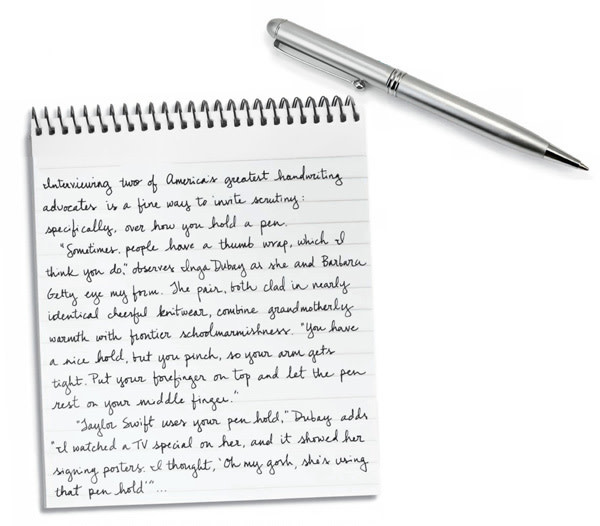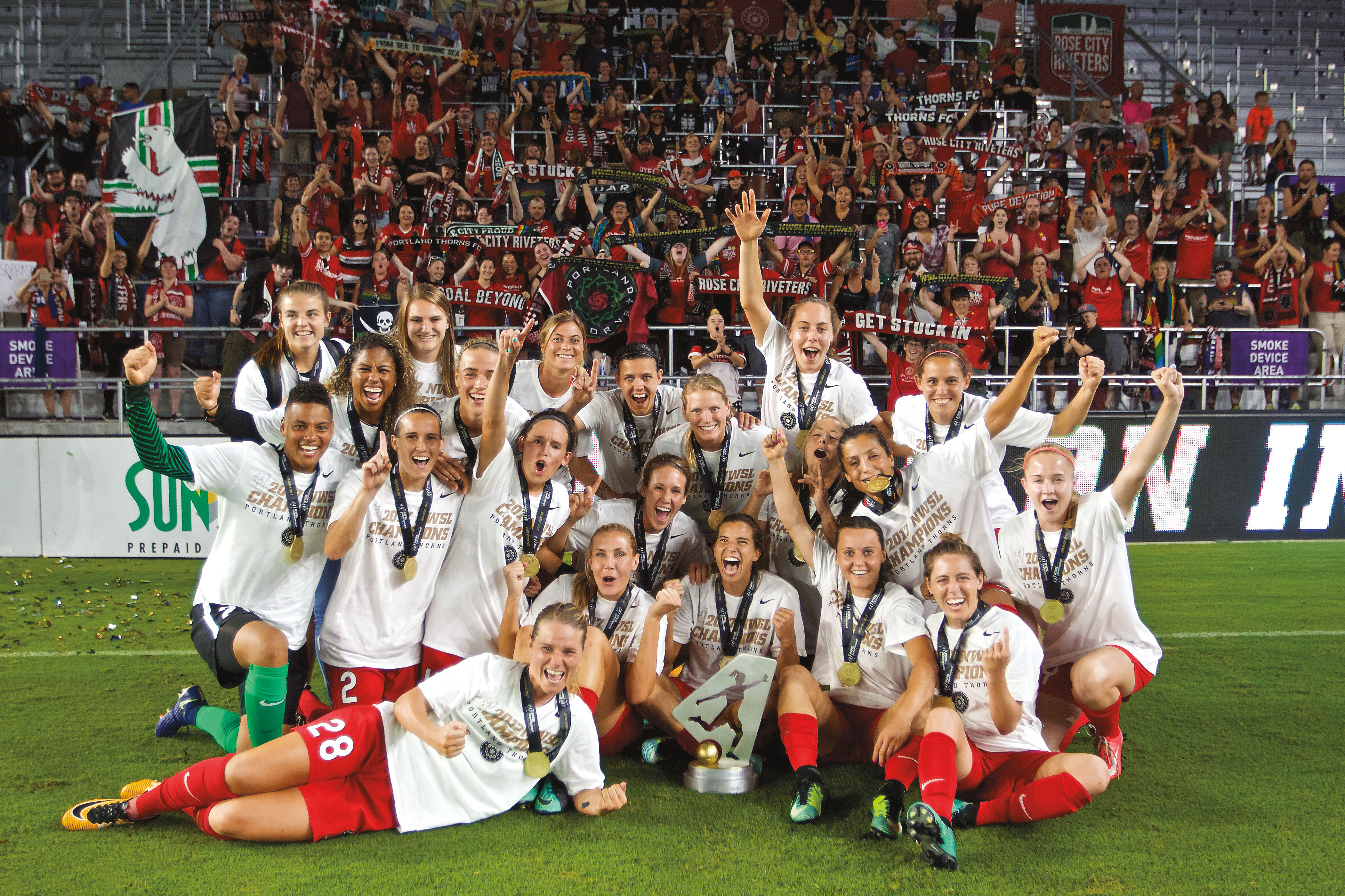The Lost Art of Handwriting

Interviewing two of America’s greatest handwriting advocates is a fine way to invite scrutiny: specifically, over how you hold a pen.
“Sometimes people have a thumb wrap, which I think you do,” observes Inga Dubay as she and Barbara Getty eye my form. The pair, both clad in nearly identical cheerful knitwear, combine grandmotherly warmth with frontier schoolmarmishness. “You have a nice hold, but you pinch, so your arm gets tight. Put your forefinger on top and let the pen rest on your middle finger.”
“Taylor Swift uses this pen hold,” Dubay adds. “I watched a TV special on her, and it showed her signing posters. I thought, ‘Oh my gosh, she’s using that pen hold.’”
... Beyond analyzing one pop starlet’s autographic ergonomics, Getty and Dubay stand at the forefront of the campaign to promote handwriting. (Admittedly, the struggle is a lonely one.) Their quest becomes especially poignant as Valentine’s Day reveals the hamfisted scrawls of e-mailers and texters trying to get all intimate and handmade. To the two Portlanders, our fading ability to write with any flair (to say nothing of legibility) is a sign of a deeper lack.
“What we’re losing in this electronic era is the personal touch,” says Dubay, who taught calligraphy for 25 years at the Oregon College of Art and Craft. “I know people who buy cards and don’t even write their names in them, and that is so sad.”
Together, Getty and Dubay have composed 10 books on the subject. They’ve even developed a program to teach an italic script, intended to replace the oft-hated cursive loops with writing of consistent slope, height, and closed letter tops. It’s wildly popular among home-school families.
As elementary schools the nation over drop handwriting as a subject—in East Portland’s Reynolds School District, for example, kids switch to keyboards in third grade—Getty and Dubay manage to keep the cause alive. From Reed College workshops to international seminars for medical professionals, the two teach how to arch n’s and stroke e’s. (Steve Jobs famously absorbed the aesthetics he later used to create Macintosh fonts in a Reed calligraphy class; informal workshops on the subject remain very well-attended at the college.) Recent articles in the New York Times, GQ, Time, and Martha Stewart Living and appearances on ABC’s Good Morning America and CNN’s The World Today have provided the duo platforms to argue that the elemental skill of marking paper matters in ways few appreciate.
“When you type A, B, C, D, E, on the keyboard, it’s the same motion,” Getty says. “But when you write an A, it’s very different from writing a B. It affects your brain differently.”
Then, there’s the reader to consider. “Bad handwriting is like mumbling on paper,” Getty says. “If I were mumbling, it would be rude. It’s the same thing if you hand someone something and they can’t read it.”
They are kindly crusaders. Dubay’s North Portland house smells of baking and steeped tea. But the duo never miss the smallest chance to advance the cause. “People who have interviewed us have changed their handwriting,” Dubay says after a final glance at my hieroglyphics. She gestures to their instructional volume, Write Now. “We’re not even looking at yours, but we do have a book here....” handwritingsuccess.com




